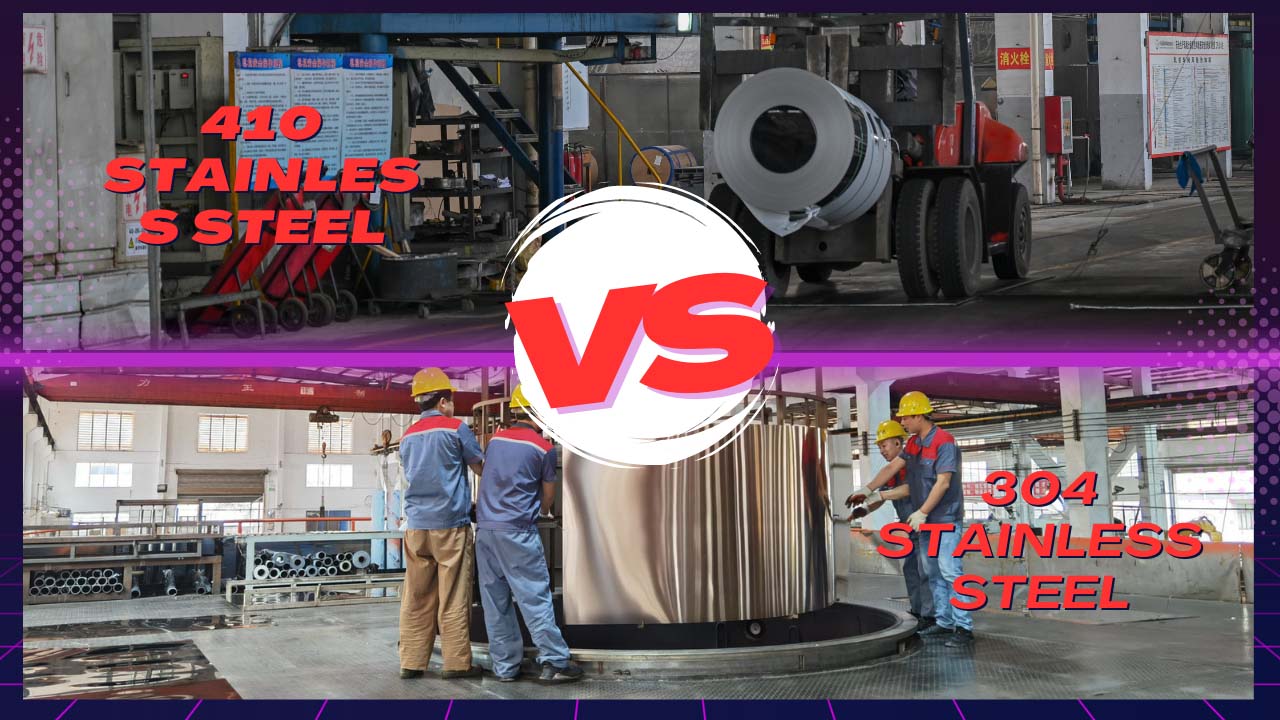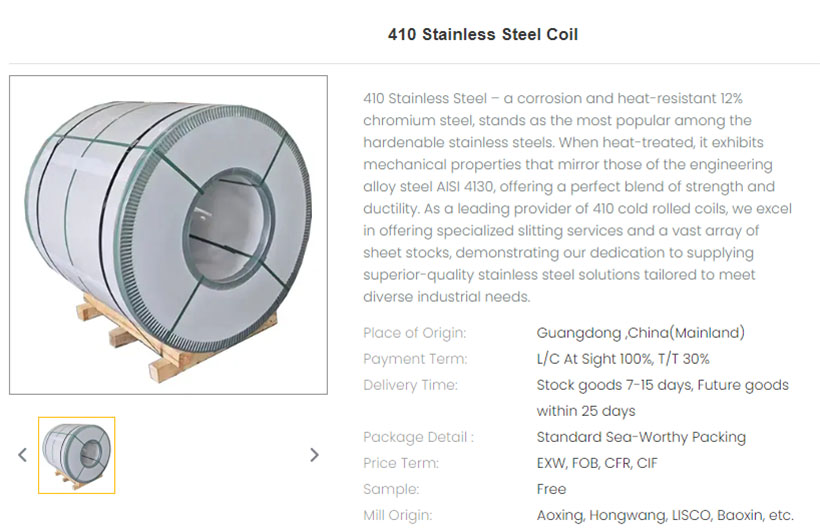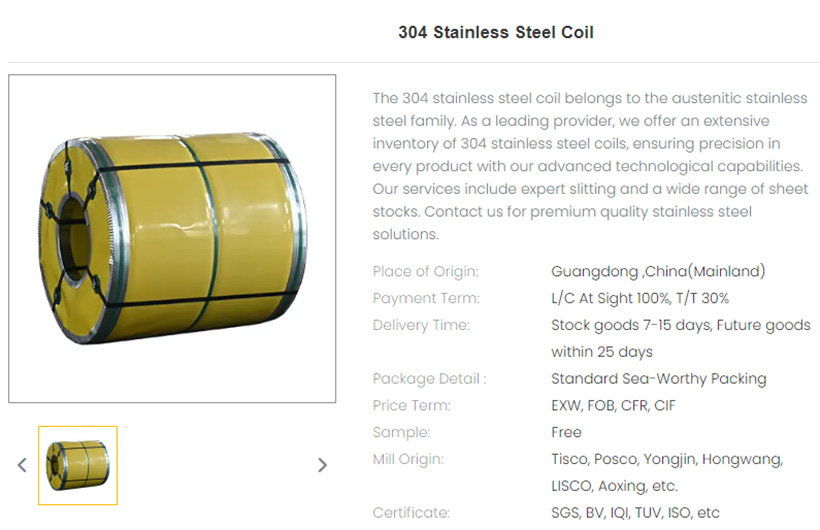At Aoxing Mill, we understand the importance of selecting the right type of stainless steel for your projects. This blog explores the critical differences between 410 stainless steel and 304 stainless steel—two of the most commonly used materials in the industry. Each has unique properties and applications, making them suitable for various uses. Whether you’re in construction, manufacturing, or any sector requiring durable and corrosion-resistant materials, understanding these differences can help you make an informed decision.
Price Range
Generally, 410 stainless steel is more cost-effective than 304 stainless steel. This price difference mainly stems from the absence of nickel in 410 stainless steel, which is a considerable cost factor due to nickel’s status as a precious metal. Market prices place 410 stainless steel at approximately $2,100 per ton, while 304 stainless steel typically costs around $3,500 per ton. It’s important to note that these prices are approximate and subject to change based on factors like material costs, exchange rates, and shipping expenses. Always refer to the latest quotations provided by Aoxing Mill for accurate pricing.
Type Classification
The main distinction between 410 and 304 stainless steel lies in their structural types. 410 stainless steel is a martensitic type, containing about 0.15% carbon and 13% chromium. In contrast, 304 stainless steel is an austenitic type, which includes about 0.08% carbon, 18% chromium, and 8% nickel. The crystal structure differences between martensitic and austenitic stainless steels contribute to their unique properties, such as magnetic qualities in martensitic types due to their body-centered cubic crystal system.
Application Range
410 stainless steel boasts higher strength and hardness, which can be adjusted through heat treatment, making it suitable for products requiring wear resistance, high temperature tolerance, and impact resistance, such as cutlery, blades, valves, and machine parts. However, it does not perform well in environments with strong acids, bases, or saline solutions, as these can cause rust and cracking.
On the other hand, 304 stainless steel offers excellent corrosion resistance and oxidation stability, making it ideal for food processing equipment, kitchen utensils, medical devices, and chemical equipment. It cannot withstand significant force or temperature changes, which may lead to deformation or fractures.
Usage
Given their properties, 410 stainless steel is typically used in applications that demand high durability and resistance to wear and temperature, such as in cutlery and mechanical parts. Conversely, 304 stainless steel is preferred for its corrosion resistance and hygiene in the production of kitchen sinks, medical instruments, and food processing tools.
Product Usage Scenarios
For a more tangible comparison, consider kitchen appliances. The inner pots of electric hot pots are usually made from 304 stainless steel due to its superior corrosion resistance and safety with food contact. In contrast, the outer casings might use 410 stainless steel for its strength and aesthetic appeal. Similarly, kitchen knives benefit from the hardness and sharpness of 410 stainless steel, whereas kitchen sinks typically utilize 304 stainless steel for its ease of maintenance and excellent corrosion resistance.
Choosing Between 410 and 304 Stainless Steel
Understanding the differences between 410 and 304 stainless steel is crucial for selecting the right material for your needs. 410 stainless steel offers strength and heat resistance, suitable for durable goods, while 304 stainless steel is best for applications requiring corrosion resistance and hygiene.
For more detailed information on our stainless steel offerings and to explore which type is right for your next project, please visit our 410 stainless steel product page
and our 304 stainless steel product page at Aoxing Mill.
Let us help you make the best choice to ensure the success of your projects with high-quality materials tailored to your specific requirements.
Post time: May-13-2024







